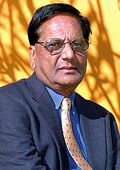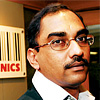|
While some big names of
India Inc. like Tata Steel and Suzlon Energy make waves globally,
acquiring and merging companies from overseas, there's a parallel
development taking place on the domestic front. Many companies
are de-merging their different businesses in a bid to create shareholder
value and to infuse a sharper focus in these separate businesses.
Last year, a large number of players de-merged their businesses.
To name just two, Indiabulls Financial hived off its real estate
arm into Indiabulls Realty, and Zee Telefilms trifurcated itself
to focus on entertainment, news and distribution. Now it's the
turn of some of the small- and mid-sized companies to walk the
de-merger route. Recently, Sundaram-Clayton received board approval
to de-merge its brakes business. It plans to separate this business
to wabco-tvs (India), but will continue to operate its non-brakes
business. Among others, Reliance Communications plans to hive
off its towers to Reliance Telecom Infrastructure. Hinduja TMT
is in the process of hiving off its IT/ITEs arm to HTMT Global
Solutions.
The current de-merger wave is driven by a booming market that
is flush with capital. But shareholder value is not the only reason
for de-mergers. Different businesses within a company have widely
dissimilar business models, and address different markets. Says
Salil Pitale, Vice President, Investment Banking, Enam Financial
Consultants: "The separated businesses get more focussed.
De-mergers empower the managers in these businesses to take quick
decisions."
Recently, Bajaj Auto created a holding company, even as it hived
off its finance and auto operations. Asian Hotels is going for
a three-way split, separating its properties geographically. Others,
too, are looking at more focussed companies to tap their growth
potential. Teledata Informatics is in the midst of a trifurcation
plan that will result in separate marine and technology companies
along with the existing business of agro biotech, networking and
education. Says K. Padmanabhan, Managing Director, Teledata Informatics:
"We wanted each company to focus on its business entirely
as the scope is enormous in each."
But there are fears that this de-merger trend could just be
used to take advantage of the current booming markets. Companies
are possibly looking at splitting purely to monetise their sum-of-parts
valuation and make their shareholders richer. The businesses de-merged
for cosmetic reasons, with little growth potential on their own,
will be exposed in the medium to long run.
-Clifford Alvares
King
of the Hill, At Last
Dr Reddy's finally rises to the top.
 |
| K. Anji Reddy: Remarkable comeback |
There is an apocryphal
story on how Kallam Anji Reddy, the founder Chairman of Dr Reddy's
Labs, his son K. Satish Reddy (the MD and coo of the company)
and son-in-law G.V. Prasad (Vice Chairman & CEO) never travel
together. The trio had never addressed an annual financial results
press conference together, either. Until last fortnight, when
the Hyderabad-headquartered pharma major found a very good reason
to call on the media in unison: In 2006-07, Dr Reddy's emerged
the largest Indian drugs company and, as Prasad adds: "We
have also become the most profitable."
Describing 2006-07 as a memorable year, Satish Reddy rolls out
the numbers. Revenues crossed $1.5 billion, or Rs 6,509 crore,
as against Rs 2,427 crore in the previous year and Rs 1,952 crore
in the year before that. Profit after tax stood at Rs 933 crore,
a growth of 472 per cent over 2006's corresponding figure of Rs
163 crore (the profit in 2005 was just Rs 21 crore). In comparison
Ranbaxy, which enjoyed pole position till recently, reported revenues
of Rs 6,065 crore and post-tax profits of Rs 515 crore in the
recently-concluded fiscal (January-December 2006). "It is
a major milestone," avers Anji Reddy, the man who prefers
to spend more time in the labs than poring over day-to-day operations
and P&L numbers.
A key growth driver for Dr Reddy's, a company established in
1984, has been its core business, with active pharmaceutical ingredients
(api or bulk drugs) posting a 44 per cent growth over the previous
year.
Acquisitions in Germany (of betapharm) and Mexico (Roche's API
business) together contributed 21 per cent to overall sales and
authorised generics products pitched in with 24 per cent. Says
Prasad: "We have identified the us, India, Russia and Germany
as Tier-I markets and the focus now will also be on Tier-II markets
like CIS, South Africa, Brazil, Mexico, Canada, Spain and Italy.''
During the year, the company got a 180-day marketing exclusivity
for generic drugs in the us with the launch of Ondansetron, a
generic version of GlaxoSmithKline's blockbuster, Zofran. Dr Reddy's
claims to have a 62 per cent share in this segment, with sales
from this drug alone contributing 4 per cent to the company's
overall sales.
Here's plenty more to look forward to, as well. In Dr Reddy's
pipeline are 69 andas (abbreviated new drug applications) pending
before the USFDA, 23 DMFs (drug master files) filed in the US
and 46 in the rest of the world, two generic biopharmaceuticals
in the market, and close to 10 under development. On the drug
discovery front, Dr Reddy's has eight new chemical entities (NCEs)
under development, with one of them set to enter phase III trials.
Dr Reddy's may be comfortably ahead of the rest of the Indian
pharma pack, but things could change fast. A big challenge would
be to ensure sustainability in Germany, where pricing pressures
and changes in healthcare policies may make betapharm a difficult
acquisition to come to grips with. Dr Reddy's has already begun
working towards shifting manufacturing to India. Overall, Dr Reddy's
test would be to keep the growth engine humming on a much higher
base.
-E. Kumar Sharma
Smart
Move on the Cards
Bartronics prepares for its next
big leap.
 |
| Bartronics' Rao: Cashing in on cards |
It has just begun production at
the first smart card-making plant in the country and perhaps one
of the biggest in Asia, with a capacity to manufacture 80 million
cards a year. For the Hyderabad-based Bartronics India, smart
cards is also a new business.
Known more for its bar-coding, radio frequency-based identification
(RFID) and biometric technologies, Bartronics will now spend Rs
270 crore to make smart cards. "We realised that if we continue
in the way in which we were growing we would, at our full potential,
not be more than a Rs 200-crore company (revenues currently stand
at Rs 62 crore), and this is a small size from a business perspective,''
says Sudhir Rao, MD and CEO, Bartronics India. "We will need
to be a Rs 1,000-crore company in the next three to four years
to be a major deterrent to major competition, and to help get
there this was the space to be in," adds Rao.
The idea of smart cards originated 18 months ago, courtesy Frost
& Sullivan, which Bartronics commissioned to survey the market.
Rao quotes a study by the consultants, which pegs the demand for
smart cards at over 150 million units (in India) in 2007, and
describes it as a space that is growing at a cumulative average
rate of around 45 per cent. In India, much of this demand is coming
from the telecom and banking sectors. "We intend to first
break into the Indian SIM card market and dominate there as currently
there is no domestic player here; this market itself is today
valued at around Rs 100 crore annually," says Rao. He adds
that in the next couple of years demand from the banking sector
would pick up as banks begin to switch from the current magnetic
tape cards to smart cards given the approaching Visa/Mastercard
deadline on this (which is 2008 as of today, but which could be
extended by a couple of years).
But if Bartronics decided to take the plunge into smart cards,
it's not just because of the growth expected from the banking
sector. The biggest trigger for the foray is a project that could
well take it to the next level in terms of visibility and profile.
This is the Multipurpose National Identity Card (MNIC) project,
which is proposed to be implemented by the Centre over the next
five to 10 years. Early this year, the National Informatics Centre
(NIC) approved its technology (for a scosta-based card-scosta
standing for Smart Card Operating System for Transport Applications)
which can be used for all government projects, including the MNIC
project. "We feel we have a good chance for getting a share
of the project as we are aware of what is required (the company
has been part of a technical committee appointed by the ministry
of commerce under NIC to define the standards and operating systems).
We are an Indian company crucial for the project from a security
point of view and, most important: By the time the project roll-out
begins (expected in the next two years) we would be making over
50 million cards on an annualised basis. That's significant enough
for the government to look at us as a serious player." Surely,
even a small share of this business could prove to be a game changer
for the company!
-E. Kumar Sharma
|






